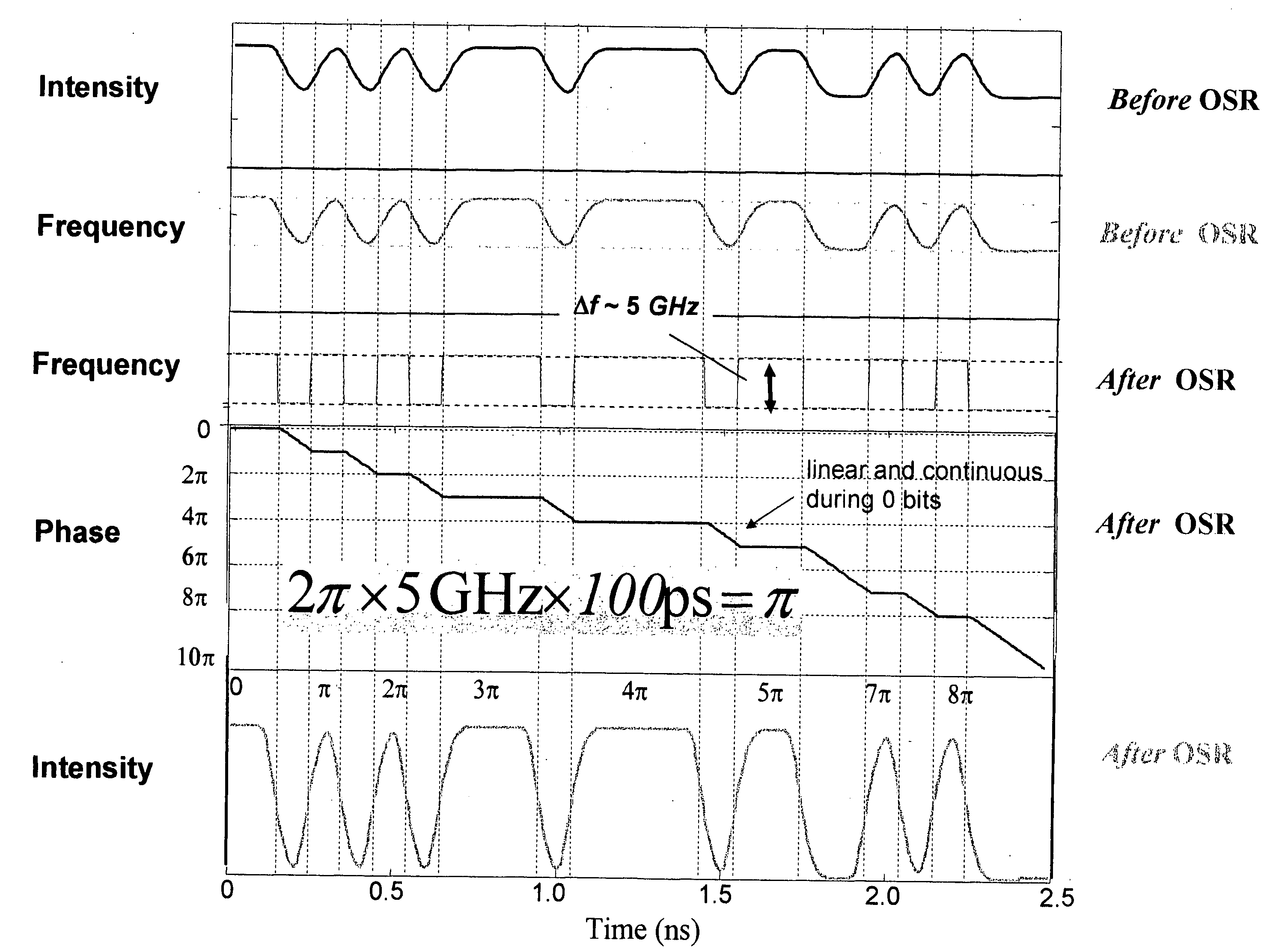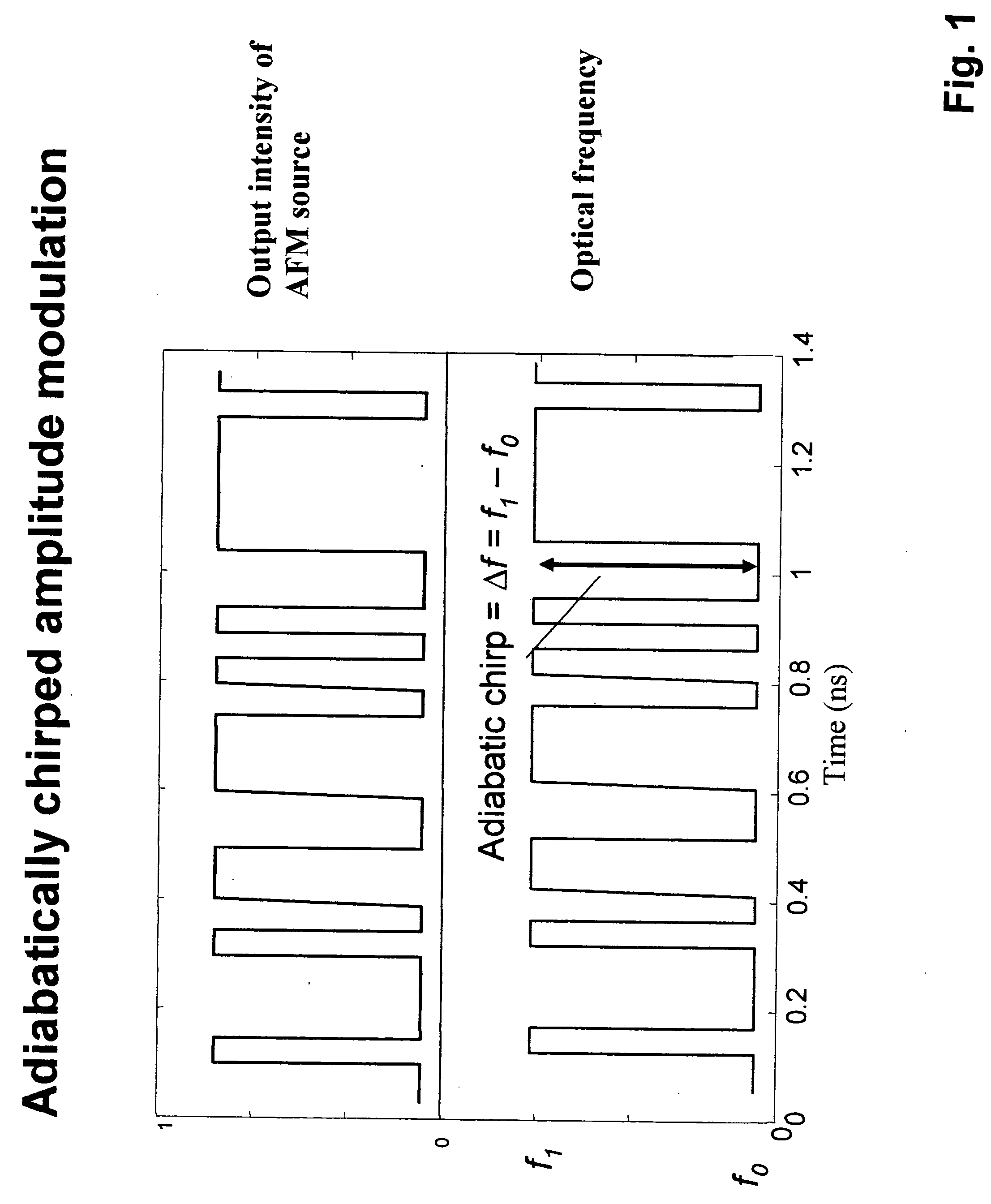Method and apparatus for transmitting a signal using simultaneous FM and AM modulation
a modulation and signal technology, applied in the field of signal transmission, can solve the problems of complex methods, special coding, and the increase of the dispersion penalty of this duobinary technique with increasing distance, and achieve the effect of widening the flat top region
- Summary
- Abstract
- Description
- Claims
- Application Information
AI Technical Summary
Benefits of technology
Problems solved by technology
Method used
Image
Examples
Embodiment Construction
Phase Coding by Direct Modulation
[0051] In one preferred embodiment of the present invention, a frequency modulated source, such as a directly modulated Distributed Feedback (DFB) laser, is modulated with a digital signal. The laser is biased high above threshold, for example at 80 mA, and modulated with a small current modulation to provide a signal with a small Extinction Ratio (ER) of ˜1-3 dB. Because of the linewidth enhancement effect and gain compression in the laser, the optical frequency of the laser has approximately the same temporal profile as the intensity modulation, as shown in FIG. 1. This property of directly modulated lasers has been known to those skilled in the art.
[0052] The instantaneous frequency of the laser changes between two extremes (f1 and f0), and this difference (Δf) is sometimes referred to herein as adiabatic chirp. The Extinction Ratio (ER) of the output (defined as the ratio of the 1 bit mean amplitude to the 0 bit mean amplitude) can be varied ov...
PUM
 Login to View More
Login to View More Abstract
Description
Claims
Application Information
 Login to View More
Login to View More - R&D
- Intellectual Property
- Life Sciences
- Materials
- Tech Scout
- Unparalleled Data Quality
- Higher Quality Content
- 60% Fewer Hallucinations
Browse by: Latest US Patents, China's latest patents, Technical Efficacy Thesaurus, Application Domain, Technology Topic, Popular Technical Reports.
© 2025 PatSnap. All rights reserved.Legal|Privacy policy|Modern Slavery Act Transparency Statement|Sitemap|About US| Contact US: help@patsnap.com



